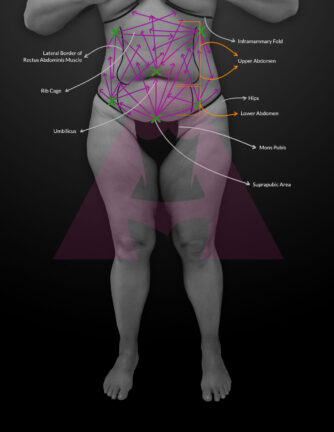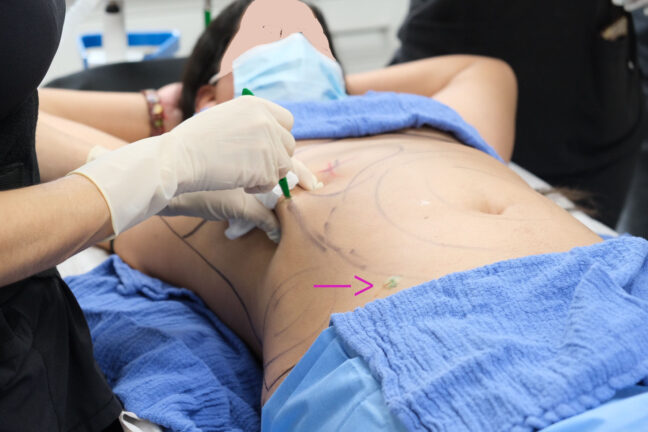We blogged about Surgical Aesthetic Photography and the importance of measuring and weighing the patient prior to surgery, now we need to address how surgical planning is imperative for the success of any surgery. The size, placement and number of incisions is a critical initial step in the planning of any aesthetic surgery. Liposuction and fat transfer procedures include multiple small incisions placed in key areas ensuring precision and optimization of technique and results. Enclosed some pearls of wisdom when doing liposuction of the abdomen, waist and back.
- Incisions are the access points of liposuction cannulas into the subcutaneous fat.
- Incisions allow post-operative drainage of blood-tinged anesthetic solution, minimizing tenderness, swelling, and edema.
- The size of an incision will depend on the size of the cannula(s) to be used: an incision should be sufficiently large to permit easy access and avoid friction with the skin that could potentially cause post-traumatic hyperpigmentation.
- Incision placement will depend mainly on accessibility and aesthetics: the need to minimize the visibility of potential scars and maximize results.
- Accessibility of placement is crucial as the idea is to have an incision placed in a location that has the most access to the areas to be treated.
- The aesthetics of placement is mostly for the patient as most patients prefer to have very small, imperceptible, hidden scars.
- The number of incisions required will depend on the size of the areas to be treated.
- Not all patients will have the same number of incisions in the same location; this will vary depending on the size of the patient and the areas to be treated. Patients will ALWAYS ask about the incisions.
- The average incisions per area is: abdomen: 3-6; waist: 1-2; love handles: 1-2; bra-line: 1-2; upper back: 1-2. If the entire abdomen, waist and back are to be treated, a strategic placement of the incisions will cover multiple areas.
- The more versatility of access, the more areas than can be treated, and the less incisions needed.



We all want to have good, acceptable and beautiful results for all our patients. But before we achieve this goal, we need to PLAN, PLAN, PLAN. Start by planning the number and placement of incisions! For more information connect with us at dravellanet.com.
